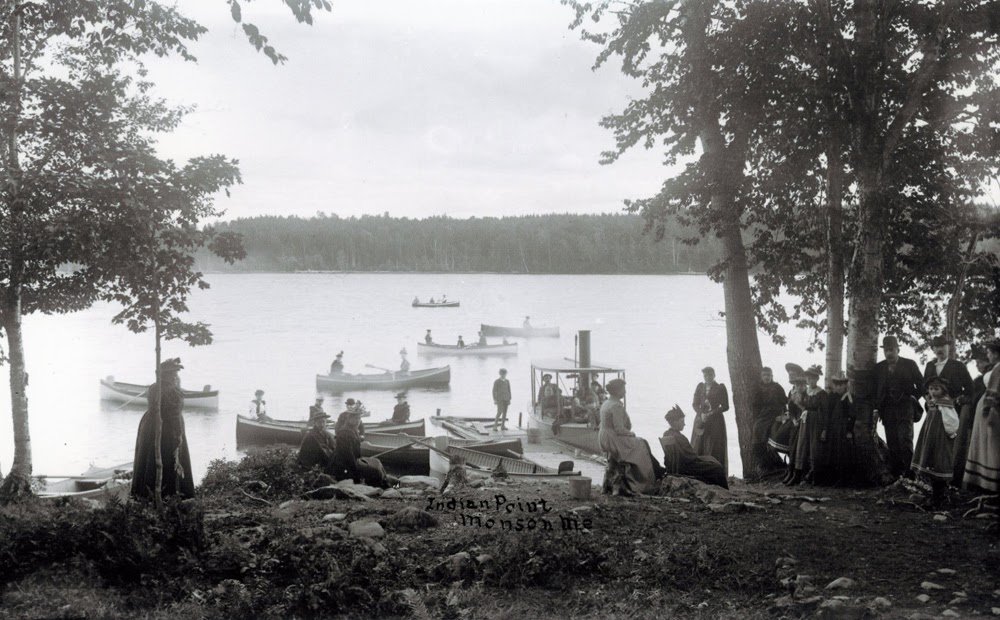
Monson History
Local features, facts and history
Photo credit Monson Historical Society
Monson Academy
A moose horn, attached to a post by one of the earliest settlers, guided newcomers over the spotted trail to Monson. This site, located a few miles south of town on Route 15, was later named “The Moosehorns” and remains today as a local landmark.
The first church building between Bangor and the Canadian border was erected in Monson in 1831 and was dedicated as a Congregational Church. The original building burned. The Monson Community Church on Main Street (comprising the old Congregational and Baptist buildings) today stands at the same location.
Monson Academy seen here, opened its doors in the fall of 1847 with 106 pupils in attendance.
Photo credit Monson Historical Society
Discovery of Slate
Slate was discovered in 1870. The Monson Maine Slate Company was the first quarry to open, and continued to operate until 1943. The Portland-Monson Slate Company was organized later and today, under the name Sheldon Slate Company, continues to produce some of the finest black slate in the world. The grave markers of both John F. Kennedy and Jacqueline Kennedy Onassis in Arlington Cemetery are made of black slate from Monson, Maine, and were also engraved here.
Photo credit Monson Historical Society
Narrow Gauge Railroad
A narrow gauge railroad was once owned by the Monson Maine Slate Company in this community, its primary purpose being to transport slate to Monson Junction. The train carried passengers, mail and freight for many years. For a current blog on this important part of Monson’s history, visit the Monson Railroad Blog by Roger Whitney.
Photo credit: John Wentworth
Kicksled
The kicksled was introduced to Monson by Mr. Gust Johnson, a Swedish blacksmith. His product was an immediate success. This became a unique and extremely popular sport in town, it being a great thrill to fly downhill and over icy lakes on a kicksled. Unfortunately, plowed and sanded roads retired this delightful pastime.






